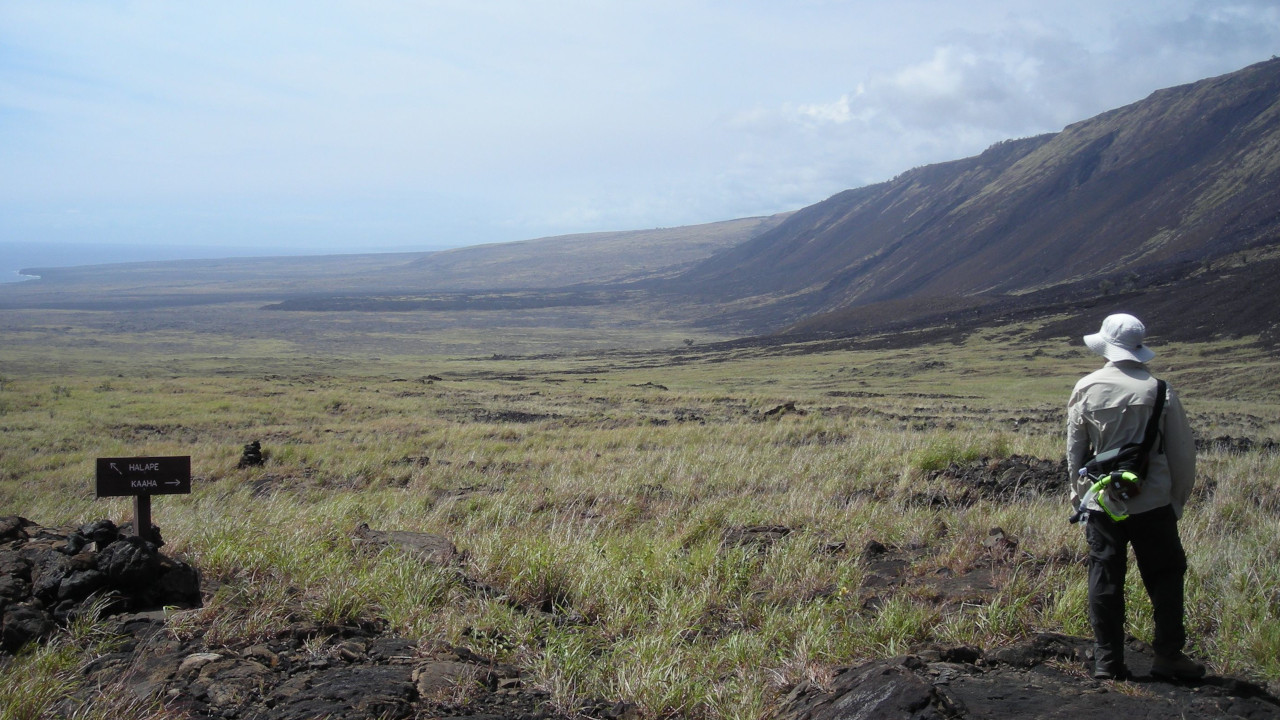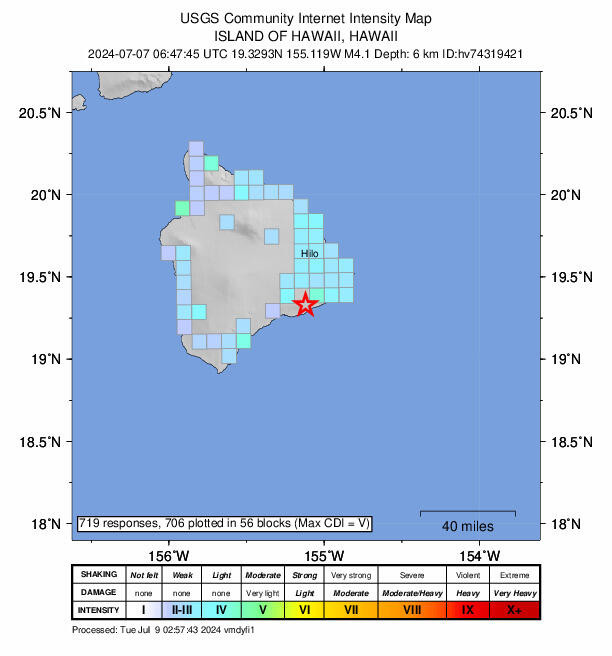(BIVN) – Earthquake activity at Kīlauea on Hawaiʻi island remains elevated. The USGS Volcano Alert Level is at ADVISORY, and scientists say there are no signs of imminent eruption, presently.
In the latest Volcano Watch article, the USGS Hawaiian Volcano Observatory examines the recent magnitude-4.1 earthquake that occurred on Kīlauea’s south flank.
From this week’s article:
Island of Hawaiʻi residents are used to feeling the ground shake beneath them. From subtle shakes that feel like wind, to abrupt jolting that knocks dishes off the counter, living on this volcanically active island means accepting that the ground beneath our feet will not always keep still.
The most recent notable felt earthquake happened on Saturday night, July 6, at 8:47 p.m HST. The magnitude (M) 4.1 earthquake was on Kīlauea’s south flank at a depth of about 7 km (4.4 miles) below sea level. This event produced a handful of aftershocks, including three above M2 that occurred within ten minutes of the M4.1.
USGS: “The Community Internet Intensity Map for the magnitude-4.1 earthquake on July 6, 2024, on the Island of Hawaiʻi (location shown by star). Felt reports show the intensity of shaking during the earthquake across the Island of Hawaiʻi. Not shown are felt reports from Maui and Lanaʻi for this event.”
Earthquakes that occur on Kīlauea’s south flank typically happen on either the Hilina fault system or the fault called the “décollement.” The steep faults of the Hilina fault system are easy to visualize as they appear on the surface as steep pali (cliffs) along the southeast coast of the Island of Hawaiʻi. These steep faults continue through the subsurface and can produce large earthquakes as rocks along the nearly vertical faults slip against each other.
The décollement, or detachment fault, sits beneath the Hilina fault system. This fault is nearly horizontal beneath Kīlauea’s south flank at the interface between the island and the ocean floor. This interface can produce larger events and, according to seismologists at the USGS Hawaiian Volcano Observatory (HVO), was the likely source of Saturday’s M4.1 based on the depth and motion.
The most recent was the M6.9 earthquake that occurred on May 4, 2018. This earthquake was caused by the magmatic intrusion in Kīlauea’s East Rift Zone, which led to the 2018 eruption in the lower East Rift Zone.
The décollement also produced a M6.2 earthquake in 1989. This event caused injuries, destroyed or damaged houses in Puna District, caused landslides that blocked roads, and generated a small local tsunami.
The most destructive of the three events was in 1975, and it was the largest earthquake in Hawaii since 1868. A M7.7 on the décollement fault beneath Kīlauea caused several meters (yards) of horizontal and vertical movement along faults in the summit and south flank regions. The earthquakes caused building and road damage, along with a tsunami that resulted in two local fatalities.
Within this greater context, Saturday’s M4.1 was only a minor slip along Kīlauea’s décollement, but its widely felt shaking serves as a reminder of the potential for this region to produce damaging and widely felt earthquakes. More than 700 people reported feeling the recent M4.1, spanning the Island of Hawaiʻi and even as far as Maui and Lanaʻi.
As residents of a very shaky island chain, the USGS “Did you feel it?” website is a phenomenal resource that citizens and scientists alike can use to report how we individually feel earthquakes.
While the magnitude of an earthquake is the size derived from data collected by the network of seismic instruments, the intensity of an earthquake is a measure of shaking derived from the network of people reporting how they felt it. Based on the felt reports, “Community Internet Intensity Maps” or CIIMS are generated in near real-time and help us understand how different types of earthquakes can impact different regions in Hawaii.
The USGS Fact Sheet “Did You Feel It? Citizens contribute to Earthquake Science” describes the importance of CIIMs: “…as a result of work by the U.S. Geological Survey and with the cooperation of various regional seismic networks, people who experience an earthquake can go online and share information about its effects to help create a map of shaking intensities and damage…CIIMs contribute greatly toward the quick assessment of the scope of an earthquake emergency and provide valuable data for earthquake research.”
The next time you feel an earthquake, first ensure that you and your surroundings are safe. Then, if you would like to support the science happening in Hawaii, please fill out your felt report. Mahalo to everyone who reports feeling earthquakes in Hawaii; your reports help us understand impacts of earthquakes in our dynamic environment.



by Big Island Video News5:34 am
on at
STORY SUMMARY
HAWAIʻI VOLCANOES NATIONAL PARK - The latest article by the USGS HVO focuses on the magnitude-4.1 earthquake that happened on July 6th.